The ACEs movement is filled with pioneers. There are physicians, professors and researchers who treat, teach and study. There are leaders of non-profits who partner with individuals, neighborhoods and organizations. Volunteers who give time. Experts who draw on wisdom gained in academia, clinical practice, community work and personal experience.
But rarely does one person do all of these things while parenting three children under the age of thirteen.
Meet Dr. RenÉe Boynton-Jarrett. She does all of these things. Pediatrician, social epidemiologist, university professor, parent, and advocate for integrating the new science of human development in communities to help them become healthier.
This new science of human development includes the epidemiology of childhood adversity, how toxic stress from childhood trauma can damage the structure and function of a child’s developing brain, how toxic stress embeds in a person’s biology to emerge decades later as disease and violence, how the effects of toxic stress can be passed from parent to child, and how resilience research is showing how the brain is plastic and the body wants to heal.
This unified science of human development starts with the CDC-Kaiser Permanente Adverse Childhood Experiences Study (ACE Study),
Boynton-Jarrett remembers when she learned about the ACE Study. It was the year 2000, when she was a graduate student in social epidemiology at Harvard T.H. Chan School of Public Health.
“My concentration was the impact of community and neighborhood violence on long-term health outcomes,” she said, “and I was very interested in how community violence intersected with family violence, as well as interpersonal violence exposure.”
There had been smaller studies and other meaningful work that had a tremendous influence on Boynton-Jarrett, but the ACE Study was significant because, “It was showing the unified relationship between many types of adversity in early childhood and a range of health outcomes,” she said. And the large sample size, the health data and the mostly middle-class population made a big impression on her.
The ACE Study showed how childhood trauma is linked to the adult onset of chronic disease, mental illness, violence and being a victim of violence. It measured 10 types of childhood adversity, those that occurred before the age of 18. They are physical, verbal and sexual abuse; physical and emotional neglect; a family member with mental illness, or has been incarcerated or is abusing alcohol or other drugs; witnessing a mother being abused; losing a parent to divorce, separation or death.
Of the 17,000 mostly white, college-educated people with jobs and great health care who participated in the study, 64 percent had an ACE score of 1 or more; 12 percent had an ACE score of 4 or more (i.e., four out of the 10 different types of adversity). The researchers found that the higher a person’s ACE score, the greater the risk of chronic disease and mental illness. For example, compared with someone who has an ACE score of zero, a person with an ACE score of 4 is 12 times more likely to attempt suicide, seven times more likely to become an alcoholic, and twice as likely to have heart disease.
The study revealed a hidden epidemic: ACEs contribute to most of our major chronic health, mental health, economic health and social health issues.
Learning about the ACE Study also prompted Boynton-Jarrett “to think about how you could explore mechanisms for how violence exposure would get into the body,” she said.
Sixteen years later, she is a social epidemiologist at Boston Medical Center where she contributes to the body of research she once studied. She’s published dozens of articles, including one that looked at the relationship between a mother experiencing partner violence and obesity in kids under the age of five, and another that explored the link between childhood trauma and obesity in adulthood. All of her research can be explored in depth here.
The second hat that Boynton-Jarrett wears is that of a researcher and an associate professor of pediatrics at the Boston University School of Medicine where she has worked since 2007. But her work is not purely academic. She is a primary care pediatrician, too, and sees patients weekly.
How does she use ACEs research when she sees families in her practice?
“I feel as though the ACE Study in many ways was a confirmation of what I was seeing with a parent who was really struggling with depression and struggling with addiction and struggling with intimate partner violence,” she said. “The pile-up of things really undermines the capacity of a person to keep overcoming and keep going forward.”
She talks with parents about the relationship between childhood adversities they have experienced and how that may have an impact on parenting.
“I frame things a bit more broadly than ACEs,” she said, “because I think it’s very important to reflect on a broader number of exposures than were covered in the original study, such as poverty or structural violence and racism.”
She routinely screens parents for depression, substance abuse, intimate partner violence, separation of co-parent (immigration, incarceration or work-related traveling), as well as a lack of food and unstable housing. And she asks open-ended questions about parenting goals.
I wondered what her specific interactions with parents are like? As if reading my mind, she answered my question with the important one she routinely asks of parents and caregivers: “Has anything scary, upsetting, or traumatic happened to you or your child in the time since we last saw each other?”
Questions and conversations are how she builds the trust and relationships that give her a “much bigger platform to have difficult conversations” that are sometimes necessary”. That, she finds, is effective, whereas “slamming parents with tons of information about how they should do a million things differently in a 15-minute visit is not only not going to be successful, but you are not going to take any time to listen to that parent and know where they are coming from,” she said.
Here’s one specific example of her ACE-informed and confidence-building approach:
“A lot of the time, I start by just catching a parent doing something good. You know, something they do every day for their children, maybe zipping up their child’s coat or maybe they are pointing out a sticker… and I just take that moment and lift it up. It’s something a parent is already doing that we know is enriching and positive in the life of the child, but it’s not really going to be acknowledged, right? You’re never going to get acknowledged for brushing your child’s teeth. But the point is that it’s an insight to the parent that where they are right now is the place to build off of, and so that’s really important to me.”
She also screens children for their “exposure to community violence, including witnessing violence; (experiencing) child sexual and physical abuse and emotional abuse; and exposure to intimate partner violence.” However, children might not even be aware of the traumatic events that impact their lives, such as a homicide in the neighborhood. Even if the child doesn’t understand or know about it, adults who do might be “behaving differently and interacting differently as result of that.”
She realizes that office visits can be short and people aren’t always ready to disclose. “A pediatric visit is just one piece, one place” to support children and families, “it’s not all of the places.”
“What I’ve learned from my perspective around prevention is that I have to put myself out there as a pediatrician in the community, and make myself accessible to parents outside my clinic, and make myself accessible to service providers and other organizing agents and agencies, because a trauma-informed framework can be really helpful for enhancing their work as well,” she explained.
Which is what her work as founding director of theVital Village Network , the third hat she wears, is all about. A group of people and organizations founded Vital Village in 2010 to strengthen the well being of children, families and community within and across three Boston neighborhoods.
Vital Village made the news last Fall after being selected by the Health Federation of Philadelphia to join 13 other communities as part of the Mobilizing Action for Resilient Communities (MARC) project. MARC is funded by the Robert Wood Johnson Foundation and The California Endowment. MARC award recipients collaborate for two years as they implement trauma-informed programs and policies that address ACEs. Best practices will be shared with the ACEs community.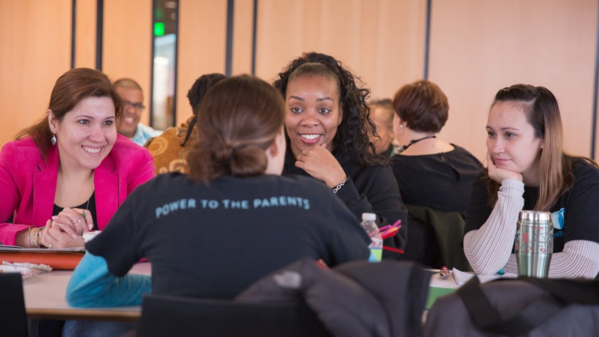
Central to the work at Vital Village is “viewing well-being, particularly social and emotional well-being, as the foundation of a lot of other things. The focus can’t be only on poverty prevention but on creating capacity for individuals, organizations and the community,” said Boynton-Jarrett.
This is done in two ways.
- To build the capacity of existing community institutions, agencies and organizations. For example, a school might also be used a neighborhood community center to empower parents and solve community problems.
- To build the strength of individuals, especially as it relates to types of civic engagement that benefits kids and families. This can mean linking existing community assets with community residents. For example, evictions impact many low-income families; they can be connected with local legal resources and protections that they don’t know existed.
"We have to set a more ambitious goal beyond simply providing a more intensive level of services to folks who have been involved in the Dept. of Children and Families,” she said, because so many adversities are interconnected. In addition, adversity can exist without parental abuse, because many systems are traumatizing families.
She explains: “If we provide children who have been exposed to violence with therapeutic interventions -- therapy, and medication -- but they still continue to live in a very unsafe housing development or feel very unsafe at school, we are actually not going to have the impact on their well being that you could have if you could work across systems to establish a safe environment for that child in addition to therapeutic approaches.”
In addition, she said, parents may simply have “inadequate supports in their efforts to be a great parent”. They may lose their jobs or lose their homes, and children suffer, even if the parents are interacting with their children in a healthy, positive way.
Many of us have faced the limits of fragmented approaches in our personal or professional lives and crave something different. She can relate.
“It really pushed me to think about the limits of any individual practice. Whether it’s pediatrics or education or social services, separately they are limited in what they will be able to do to support families. “
This might discourage some people, but not her. It simply proves the it-takes-a-village notion.
For example, she asks: “Can a child really have success in school if they don’t have optimal well-being? It doesn’t matter what educational interventions you do, you’re not going to get the benefits of that intervention if that child is not able to socially or emotionally regulate themselves, or they don’t feel safe.”
Two schools in Roxbury that Vital Village partners with are Haynes Early Education Center, a pre-school, and Orchard Gardens K-8 Pilot School. Boynton-Jarrett has learned how teachers “often have a very strong intuition that something has changed about a child because they see the same children every day. Maybe they noticed a child losing confidence, getting quiet or having tantrums,” she said, “but they don’t necessarily have information that abuse or neglect is happening.”
The Vital Village trauma-informed framework can validate that what teachers observe “might be significant.” And rather than having teachers wait for a child to exhibit more trauma symptoms, they will be encouraged to provide resources for a child whose behavior indicates trauma that teachers can’t identify. Or teachers can be taught to respond to a specific event, such as helping a child who saw “a body in the street that wasn’t covered up on the way to school,” she said.
When teachers “begin to see the work they are doing with children on a daily basis is a trauma-informed framework, that’s very empowering to them,” she said.
Boynton-Jarrett is precise with words. When I said “trauma-informed care” she clarified, “We use trauma-informed ‘framework’ instead of ‘care’ because care is limited to more of a service position or clinical kind of setting.” A trauma-informed framework encompasses all parts of a community.
She herself has been on the receiving end of trauma-informed training provided by an interdisciplinary group of clinicians and service providers at Boston Medical Center, with a Vital Village community resident partner at the table. It was “a really important process,” she said, where they learned, for example, how a receptionist is the first person in the clinic to deal with angry parents, and to identify this as an area where additional resources are needed.
While Boynton-Jarrett speaks openly and eloquently about her work, it’s difficult to get her to say much about herself. She has three children who are 5, 8 and 12 years old; her life-work balance, she said, is a “whole other story.”
I learned she used to drink more tea, but now starts the day with coffee, the New York Times and the daily digest from ACEsConnection.com. And that her favorite color is “probably purple.”
But I learned little else until I asked: “What brought you to the work?”
It went way back “before college” to her elementary, middle school and high school years in Englewood, NJ. “There were really smart, really capable kids who were really creative who were not able to be successful, who had a very different trajectory,” she recalled.
She felt “very thankful that I had these opportunities” in college to learn and explore, but she also felt “a big responsibility that everyone I went to school with should have had the same opportunities.”
“I was always interested in why there were such large gaps in the safety net and where that came from,” she said, and how “the reason these opportunities didn’t materialize was not the fault of those individuals.”
She doesn’t see herself as a success and some of her classmates as failures, as some people might when they look at what the students in her class are doing now. She saw a playing field that wasn’t level. She sees it still.
“I see many instances where a child has been let down by the fragility and inconsistencies of their environment. Have we decided that we’re OK with the fragility of the system, the fact that it’s gonna fail kids? Isn’t the investment early in the lives of all children the long-term investment in our social well-being and success as a society?”
That a quote from the PBS documentary series, The Raising of America, in which she’s featured.
In it, she speaks on behalf of children and asks:
“Is this a safe world?
What will happen when I feel afraid?
What will happen when I feel hungry?
What will happen when I feel scared?
Can I count on you?”
Her questions aren’t pointed at parents, but asked of us all.
Her answer? Action.
“The only way to really prevent adverse childhood experiences is to collaboratively, actively promote optimal child and family well-being and to build community capacity to do that,” she said.

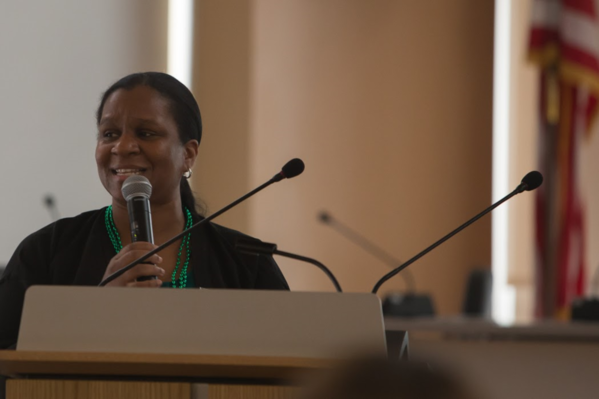
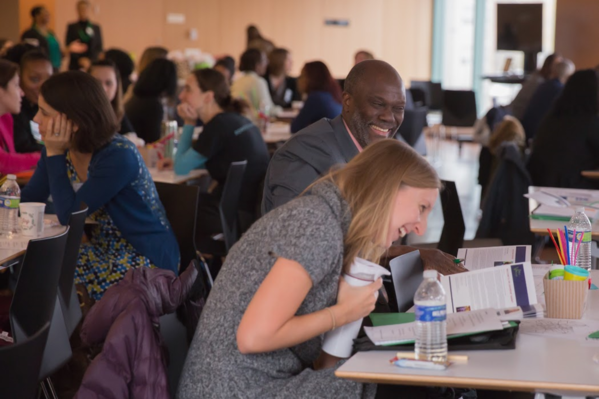
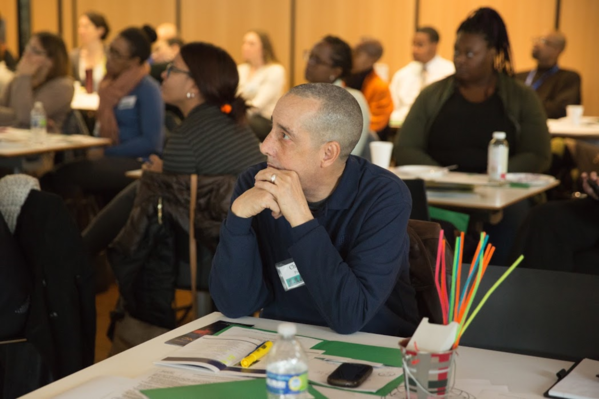
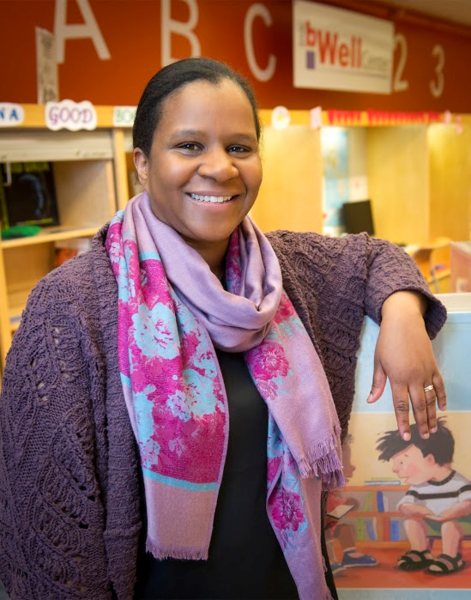
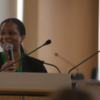
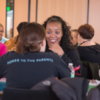
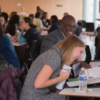
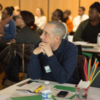
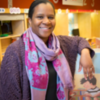
Comments (1)